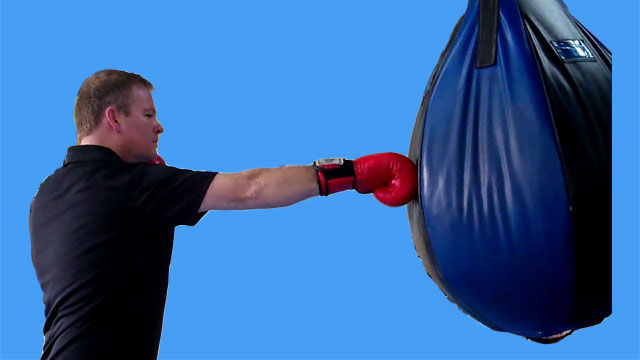Unleashing the Power: The Science Behind the Right Cross in Boxing :
In the world of boxing, the right cross is a formidable weapon, capable of delivering a knockout blow when executed with precision and power. Behind every successful punch lies a complex interplay of biomechanics, power, and kinetic energy.
In this blog, we will delve into the science behind the right cross of an orthodox boxer, exploring how power and kinetic energy are harnessed and enhanced to generate a devastating punch.
Biomechanics of the Right Cross: Biomechanics plays a crucial role in optimising the efficiency of a right cross. The sequence of movements involves the legs, hips, torso, and shoulders, culminating in the powerful extension of the arm. Understanding and refining these biomechanics are essential for a boxer aiming to deliver a punch that not only lands accurately but also packs a significant amount of force.
Stance and Weight Transfer: Begin with a proper boxing stance: feet shoulder-width apart, knees slightly bent, and weight evenly distributed. Initiate the punch by rotating the rear foot, which transfers energy through the legs, hips, and into the torso.
Hip Rotation: As shown in the above video rotate the hips in the direction of the punch, engaging the core muscles and facilitating a smooth transfer of power from the lower body to the upper body.
Torso Twist: Twist the torso as the punch progresses, amplifying the rotational force generated by the hips.
Shoulder Extension: As the torso twists, the rear shoulder extends forward, ensuring that the full force of the body is transferred to the arm.
Power and Kinetic Energy: The power generated in a right cross is a result of the conversion of kinetic energy, derived from the body's movement, into the impact force delivered by the fist. The equation P = ½mv^2, where P is power, m is mass, and v is velocity, encapsulates the essence of the kinetic energy involved.
Mass: Building muscle mass in the legs, hips, and core is crucial for generating power. Strength training exercises like squats, deadlifts, and core workouts contribute to increased mass and overall strength.
Speed and Velocity: Enhancing the speed of the punch is equally important. Shadow boxing, speed bag workouts, and focus mitt drills help improve the velocity of the punch, translating to increased kinetic energy.
Timing and Precision: Proper timing and precision are essential components of an effective right cross. Practicing with a skilled coach or using a heavy bag can help refine these aspects, ensuring that the kinetic energy is efficiently transferred to the target.
Exercises for Developing Power in a Right Cross: Plyometric Exercises: Box jumps, jump squats, and explosive lunges enhance the explosive power needed for quick and forceful movements.
Medicine Ball Twists: Holding a medicine ball, perform rotational twists to simulate the hip and torso movement involved in the right cross.
Resistance Training: Incorporate resistance bands into your training routine to add resistance to punching movements, strengthening the muscles involved.
Speed and Accuracy Drills: Use focus mitts, speed bags, or double-end bags to improve hand speed, timing, and accuracy.
Mastering the right cross in boxing is not just about raw strength but a delicate balance of biomechanics, power, and kinetic energy. Through targeted exercises and a deep understanding of the science behind the punch, boxers can unlock the full potential of their right cross, making it a devastating weapon in the ring. Remember, precision and power go hand in hand, and a well-executed right cross is a testament to the fusion of biomechanics and athleticism in the sport of boxing.
